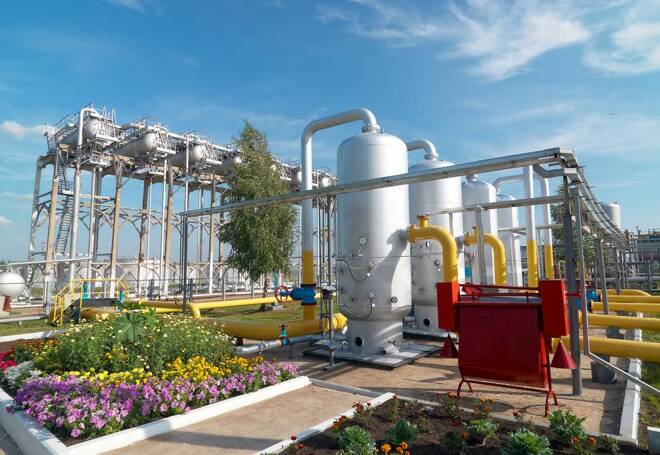Advertisement
Advertisement
Natural Gas Price Fundamental Daily Forecast – Weather Moves to Forefront as November Chills Approach
By:
"It wouldn’t take much for colder air over Canada to slide into the northern U.S. for colder trends for the first week of November." ~ NatGasWeather
Natural gas futures finished higher on Friday despite giving back nearly half of its early gains amid an upward change in demand expectations as forecasts shifted to colder for November.
On Friday, December natural gas futures settled at $5.461, up $0.115 or +2.15%.
NatGasWeather: Forecasts Tilt Colder for Early November in Midwest and Northeast
NatGasWeather wrote on Friday that mild temperatures were likely to continue through the end of the month, reducing weather-driven demand overall. However, an updated forecast tilted colder for November in the Midwest and Northeast. The news gave speculators reason to believe that heating demand in those areas could rise over the near-term.
“While the coming pattern is still bearish, it’s not quite as bearish as the data showed to open the week,” NatGasWeather said. “The pattern would be more impressive if not for comfortable conditions continuing over most of the southern two-thirds of the U.S.” through the first week of November.
“We need to be careful here since it wouldn’t take much for colder air over Canada to slide into the northern U.S. for colder trends for the first week of November,” NatGasWeather said. In “our view, the current risk is the weather data adds a little demand for the start of November.”
Bespoke Weather Services: Sees Potentially Bullish Weather Changes
“We continue to see models step up the level of blocking in the high latitudes in early November, which, while not making things all that cold right here and now, increases the risk that some colder than normal air finally gets involved down the road,” Bespoke said. “Thus, the changes seen are potentially more bullish.”
With the 15-day outlook now stretching into the start of the heating season, “it is going to be the weather forecast that carries the most weight from here,” the firm added.
EBW Analytics Group: ‘Significant Gains are Possible’
“If meteorological signs for mid-November cold continue to strengthen” and LNG “bounces higher at the same time as November contract options expiration Tuesday and final settlement on Wednesday, significant gains are possible,” the EBW team said Friday.
Short-Term Outlook
“Currently, market positioning suggests the need for at least modest cold, or recent declines may extend to the low-to-mid $4.00/MMBtu range,” EBW analysts said. “Any significant cold shot before Thanksgiving, however, could return prices toward recent highs north of $6.00/MMBtu.”
Technically, the major support zone is $5.269 to $4.956. This area stopped the selling at $5.070 on October 19. If it fails to hold, prices could collapse with $3.944 a potential downside target. This would likely occur if the new forecasts for November come in warmer than normal.
On the upside, buyers would have to overtake two resistance zones at $5.591 to $5.713 and $5.832 to $6.011 before the market can make another run at its recent top at $6.593.
About the Author
James Hyerczykauthor
James Hyerczyk is a U.S. based seasoned technical analyst and educator with over 40 years of experience in market analysis and trading, specializing in chart patterns and price movement. He is the author of two books on technical analysis and has a background in both futures and stock markets.
Advertisement
